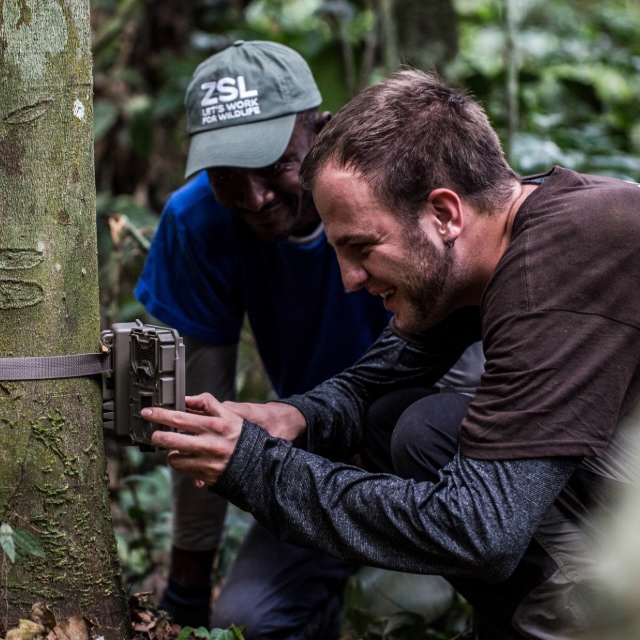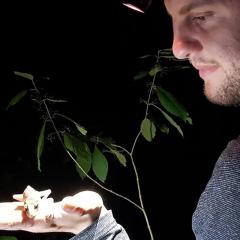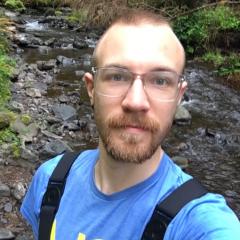Getting out of the (literal) rat race
At 22, I was strolling through London with a load of rodenticide strapped to my back en-route to another pest control inspection. Catching rats was my first choice after finishing my undergrad, and it certainly had nothing to do with the rejection of my first Master’s application… While this job allowed me to be outside, solve problems, and get into strange situations (rooftop pigeon-trapping during a fashion modelling photo shoot springs to mind), I had larger ambitions and my eyes cast across the seas.
A steppe in the right direction
A chance application during the first year of my undergraduate degree initiated me into field ecology and conservation. The Zoological Society of London (ZSL)’s Steppe Forward program allowed five undergraduates to attend a field course in Hustai National Park, Mongolia. I loved the weeks living in yurts and learning how to conduct biological surveys. I learned about making pitfalls for insects (sadly outperformed by our communal handdug latrine!), deploying camera traps with hopes set on finding Mongolian wolves (Canis lupus mimax), and conducting horseback transects for ungulate density. It was the conservationists I met who ultimately had the greatest influence on me. The course leader, Rajan Amin, became a friend and a mentor, ultimately co-supervising my PhD a decade later.

Image credit: Adam Finch, Zoological Society of London
Into the heart of darkness
I reapplied and got into my preferred Master’s course in Wild Animal Biology run by the Royal Veterinary College and ZSL. Here, I got my first exposure to analysing camera trap data, carrying out my final project identifying animals and modelling their abundance from the Arabuko Sokoke forest in Kenya. My first trip to Africa was as a Terrestrial Research Officer for a gap-year organisation on the small island of Mafia, off the coast of Tanzania. This was a mixed experience, as the opportunity to go out daily, carry out bird surveys, see giant forest sengis (Rhynchocyon sp.) running around the bush, and try and get footage of that famous terrestrial animal, the whale shark, was irreplaceable. However, the downsides included realising that not every organisation in conservation is there for the greater good and that profit margins are something they consider. I then returned to London and took on a role as an intern with the ZSL Africa team, managing camera datasets from the largest desert in the world, the Empty Quarter in Saudi Arabia.
However, I progressed to helping the Cameroon team manage their latest surveys from a location that would soon become familiar to me, the Dja Faunal Reserve. When this contract finished, I feared I would struggle to get into a full-time conservation role but, at this point, another influential figure would enter: David Olson.
I met David, the Cameroon country manager, at the ZSL Annual General Meeting, and a long evening followed, discussing, among other things, one of our favourite topics: how to help baby elephants. He decided he liked the cut of my jib and offered me the opportunity to come to Cameroon to not only carry out camera trap surveys but also expand my skill set to the practical application of line transects and distance sampling across an entire reserve, coordinating several teams to simultaneously survey great ape and forest elephant (Loxodonta cyclotis) populations.
My time in Cameroon allowed me to understand what I enjoy about working in conservation, and that is building capacity within my colleagues and designing and executing conservation projects with tangible outcomes.
I am proud to have had the opportunity to train and empower others who call that country home to carry out surveys that would ultimately benefit wildlife conservation for species like central chimpanzees (Pan troglodytes troglodytes), western lowland gorillas and forest elephants in a longer-lasting way than my presence there ever could. From a personal perspective, another highlight was getting one of the first confirmed records of the African golden cat (Caracal aurata) in the Dja Faunal reserve from a camera trap survey that we carried out.
“Bart, don’t make fun of grad students. They just made a terrible life choice”
I chose to continue my interest in rainforests, predators and ecology on a new continent, Australia, when I came to James Cook University for my PhD on feral cat ecology in the Australian Wet Tropics. This still fed into what I enjoy about conservation, which is applied projects, where I showed that, contrary to some opinions, cats are present in rainforests in Australia, and provided the first steps in recommendations for managing their populations in these complex, food-rich environments.
It also allowed me to indulge my inner Wile E. Coyote, building my own netlaunching contraption using pressurised air and watching a road from a hide using a thermal monocular. Unsurprisingly, it did not catch anything.

frère” Constant Ndjassi while delivering a training session for
elephant dung and great ape nest identification and ageing.
Image credit: Adam Finch, Zoological Society of London.
The cats out of the bag
It was a combination of my experiences in the Congo Basin and with predators and camera-trapping that brought me to The University of Queensland. I first talked to Dr Matthew Luskin when he asked how his PhD student (Bastien Dehaudt) might go about catching duikers (a forest antelope) for a GPS collaring study. Matthew didn’t take my advice, and he and Bastien spent a month without catching more than a single duiker. The next time I talked to Matthew, he offered me a job to co-found and build the Wildlife Observatory of Australia (WildObs) with seed funding from CBCS. My move to UQ and involvement with CBCS have provided my first sense of an academic conservation community, and I am embracing it. My role at WildObs allows me to use skills I have picked up at each of my career stages and adventures.
This is especially true in how I work with a variety of people to build a research network. I’m able to develop tools and analyses to benefit other researchers and ultimately deliver projects with tangible conservation outcomes.
The WildObs approach to collaboration and data-sharing will enable continental scale wildlife modelling. I’m excited about the research questions and impact that this will deliver. For example, my first project will examine whether and how dingoes (Canis lupus dingo) influence fox (Vulpes vulpes) and cat populations, and whether this varies across Australia’s diverse ecosystems. Those results will enable managers to implement conservation strategies to reduce invasive predator impacts on native Australian fauna.
Read more of these stories in Issue 19 of the CBCS Newsletter and follow us on X (Twitter) and LinkedIn.


